Google didn't need to make its own smartphone. Even though the company spent several years having other manufacturers build phones it could slap its "Nexus" branding on, selling hardware is not core to Google's business. Things like advertising and Search still handily dwarf the inroads the company's made as a smartphone manufacturer, and that will likely remain true for the foreseeable future.
Compared to the contributions the iPhone makes to Apple's bottom line, the Pixel has always, in some sense, been a hobby. Which means Google finds itself in a familiar place heading into the launch of the Pixel 10. It's better than it's ever been at the business of building phones, but the task for the Pixel remains the same: get people to use Google software (especially Search).
The first smartphones "made by Google"
Google sold its own hardware, including a lineup of phones, under the Nexus brand from 2010 to 2016 — but it was always known that hardware manufacturers like HTC and Samsung were actually building the hardware.
That changed with the Pixel, the first time Google started using the now-ubiquitous "made by Google" phrasing. Ever since the first Pixel phone arrived in October 2016, Google’s phones have been defined by their camera skills. Google's significant breakthroughs in computational photography influenced the entire industry, and continue to do so today. The original Pixel and Pixel XL featured a single 12.3-megapixel camera and let anyone take great HDR photos without any fuss. Purchasing a Pixel or Pixel XL also unlocked unlimited full-resolution backups of your photos in Google Photos for free, a strong incentive to consider switching to Google's smartphone in its own right.
The company's glass and aluminum phone was more than just its camera sensor, though. A big part of Google's early pitch for the Pixel, and other hardware like Google Home, was that it could serve as a vehicle for Google Assistant. The AI-powered voice assistant had shades of Siri, and voice control features previously available in Android. But it was far more integrated into Google's software and services and had a deep well of knowledge to draw on from Google Search. An "OK Google" could let you set a timer on your phone, but it could also answer trivia or tell you about an upcoming calendar event.
Google continued to lean on software for the release of the Pixel 2 and Pixel 2 XL, which put Google Now-style proactive information on a new always-on display, along with a refined design with pressure sensitive sides that could activate specific functions on the phone. In terms of the camera, Google's major improvements over the original Pixel were the addition of optical image stabilization for video and a custom imaging chip, dubbed the Pixel Visual Core, that handled the image processing for both first-party and third-party camera apps. Besides being the first instance of Google sneaking some of its own custom silicon into its phone, the Pixel 2 was also was a significant challenge to Apple's dominance in the photography department
That pattern continued with the release of the Pixel 3 and Pixel 3 XL, which again featured a slightly modified design, wireless charging and a collection of new camera features. The biggest was Night Sight, Google's software solution for taking really good photos when there’s barely any light available. The feature was released after the Pixel 3 came out, and gave the phone the ability to capture more or less light at night depending on the shakiness of your hand. The third-generation Pixel was also paired with the introduction of Google Assistant's Call Screen feature, a mixture of visual voicemail and audio transcription that allowed users to see why someone is calling and only pick up if they wanted to.
Google would go on to introduce the first budget version of the Pixel a few months later with the Pixel 3a, a practice that continues to this day. In the following years, the company's releases were mostly memorable for gimmicks like the Pixel 4's Motion Sense feature (using radar to detect hand gestures to launch shortcuts) and the adoption of industry trends, with the Pixel 5's support for 5G.
The company followed up those phones with a few releases that were only memorable for gimmicks like the Pixel 4's Motion Sense feature (essentially motion controls for specific apps) and the adoption of an industry trend, with the Pixel 5's 5G support.
Say hello to the camera bar and Tensor chip
It would take the radical new design of the Pixel 6 to snap things back into focus for Google. Not only did the Pixel 6 have a massive, shelf-like camera bar on the back, but the phone was also the first to be powered by a custom SoC developed by Google. Rather than focus on raw power, the Google Tensor chip was designed to handle on-device AI tasks like Magic Eraser for editing photos, Live Translate for converting text to another language as you type and Direct My Call, which lets the Pixel navigate phone trees on your behalf.
The splashy launch of the Pixel 6 in 2021 marks the new path Google's smartphones have been heading for the last four years. They're still good at taking photos, but their main role is to be a showcase for whatever AI feature the company has cooked up most recently. Google continued to refine the idea with the release of the Pixel 7, which was paired with the first Pixel Watch following Google's acquisition of Fitbit in 2021. 2023 brought the Pixel 8 as well as the company's first foldable, the Pixel Fold.
The move also matched internal shifts at Google itself. The teams developing the Android operating system have long been separate from the teams building Pixel phones out of respect for Google's partners who make their own Android phones. That changed in 2024 when Google announced a reorganization that placed Pixel and Android under the same "Platforms & Devices" umbrella. The stated motivation was that aligning software and hardware would let the company release new AI features even faster, which bore out in the various Gemini features on the Pixel 9 lineup and whatever the company has planned for the Pixel 10. On some level the intimate role smartphones play in people's lives makes them an obvious venue for AI, something the company clearly wants to take advantage of based on in-development features like Project Astra.
Google clearly experimented throughout the life of the Pixel, but the phone has always been a tool to sell software ideas. Demonstrating the potential of computational photography had early success, and now the company is trying to do the same thing with generative AI and Gemini. Competition remains fierce — OpenAI shared in December 2024 that ChatGPT had 300 million weekly users, making it a real threat to Google's core business. Google has never been a hardware company, nor has it needed to win at hardware. But with stiffer competition in software than ever, using the Pixel series to get people to use Google's many services is arguably more important than ever.
This article originally appeared on Engadget at https://www.engadget.com/mobile/smartphones/10-pixels-in-the-purpose-of-a-google-made-smartphone-remains-the-same-160007404.html?src=rss https://www.engadget.com/mobile/smartphones/10-pixels-in-the-purpose-of-a-google-made-smartphone-remains-the-same-160007404.html?src=rssAutentifică-te pentru a adăuga comentarii
Alte posturi din acest grup


Is it finally happening? Team Cherry just announced a livestream for the long-anticipated sequel Hollow Knight: Silksong. It takes place on April 21 at 10:30AM ET. The company says it will
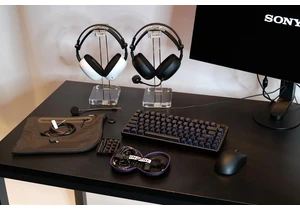
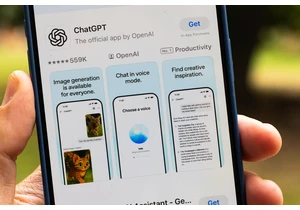
OpenAI has debuted its cheapest subscription yet for India only, product head Nick Turley announced on X.
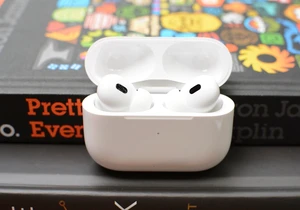
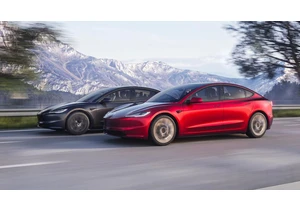
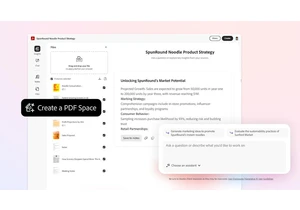
Whether you love or hate them, PDFs are an inescapable part of the job for many of us. In fact, it's safe to say the format isn't going away anytime soon, with Adobe reporting there are 3 trillion
